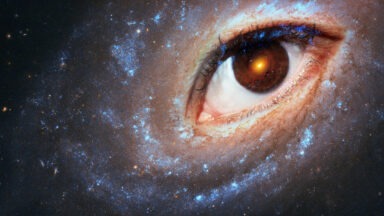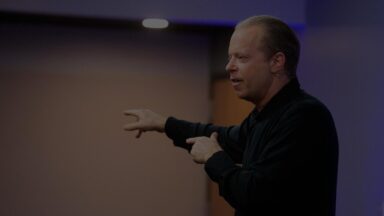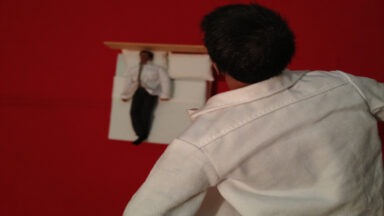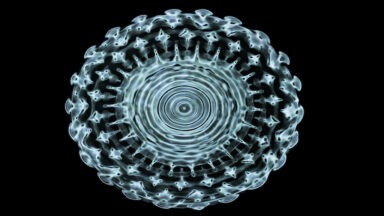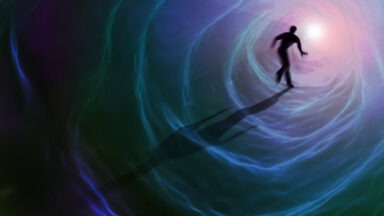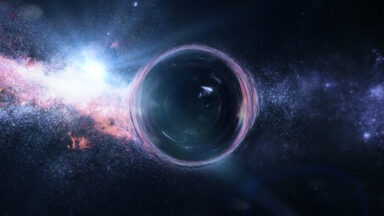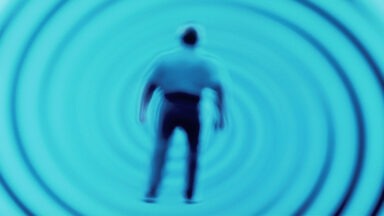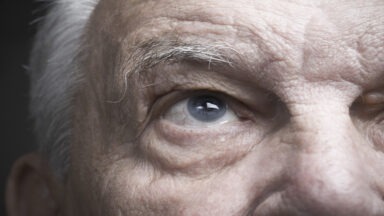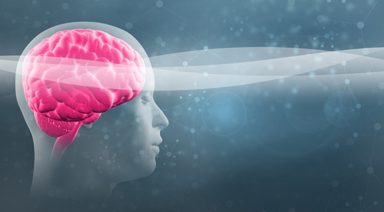Does Long Hair Improve Psychic Capabilities?

Indigenous cultures have often connected long hair to psychic capabilities or improved intuition. Allegedly, the infamous Choctaw and Navajo Native American scouts of the Vietnam War, known as the “Code Talkers,” attributed their extra sensory capabilities to their long hair. According to these recruits, who were forced to cut their hair, their intuition dimmed with short hair, rendering them less effective as trackers.
Long Hair and Improved Intuition: Myth or Fact?
Western science is still catching up to Eastern and mystical knowledge. Currently, Western science considers hair to be dead. However, knowledge of the subtle body is growing. It is not beyond the realm of possibility that hair picks up on and transfers subtle information.
In biblical mythology, Samson, also known as the “Strong Man,” was forbidden to cut his hair; his long hair was considered a testament of his dedication to God. In the stories of Samson, his strength is connected to his hair length.
Is Hair Alive?
The short answer, according to modern science, is “no.” Hair is dead by the time it is long enough to poke out through the skin. Yet, according to a study published at the University of Illinois, Chicago, “the hair cells of the inner ear have a previously unknown “root” extension that may allow them to communicate with nerve cells and the brain to regulate sensitivity to sound vibrations and head position, researchers have discovered.” Perhaps our medical technologies are unable to identify the “root” of other types of hair follicles at this time.
According to the American Academy of Dermatology, “your hair begins growing from a root in the bottom of the follicle. The root is made up of cells of protein. Blood from the blood vessels in your scalp feeds the root, which creates more cells and makes the hair grow.” Quantum physics unveils the connectivity of all things, from our cells to the outside world: why would the hair-brain-heart connection be any different?
Sensory Capabilities: Whiskers Versus Hair
Hair serves different evolutionary purposes: whiskers, ground fur and guard fur are meant to 1) pick up environmental information, 2) keep animals warm, and 3) protect against the elements, respectively. While all made of keratin, whiskers have measurable innervation, meaning they send important information to the nervous system and brain (i.e., large object to the left!). Common knowledge considers human hair incapable of sending information even though it is also keratin, albeit much thinner.
Intelligent Hair: A Social Experiment
Consider for a moment this social experiment: stand behind someone who is unaware of your presence and place your hand close to their head of hair, moving closer and closer to their hair until you barely touch it (obviously, try this on someone you know). When do they become aware of your presence?
Often, the subject of this experience will acknowledge your presence (hopefully without too much surprise) either just before you touch their hair or as you touch their hair.
You may also try growing your hair yourself. Let us know if you feel more “in tune” in six months.
Why Does Hair “Stand on End”?
Everyday Health states that, “goose bumps are the result of a reflex that makes the muscles attached to the base of each hair follicle contract.” This reflex is triggered by adrenaline. Also known as “piloerection”, this evolutionary response in animals provides warmth (personal insulation via a layer of air) and protection (think of a Porcupine).
How to Take Care of Your Hair Antennae
Yogi Bhajan famously taught students to repair split ends with almond oil at night to repair and maintain hair antennae.
Improve Your Intuition, Regardless
If you are interested in honing your psychic capabilities, with or without long hair, try your eyes at remote viewing.
Precognition: Is It Possible to Know Something Before It Happens?

Precognition is the ability to know that something is going to happen before it occurs. It is a form of perception that does not depend on visible signs, sounds, or other environmental cues. In this article, we explore what precognition is, how it manifests, and what you can do to develop this ability.
Table of Contents
- What Is Precognition?
- How Is Precognitive Information Received?
- Differences Between Precognition, Intuition, and Clairvoyance
- Precognition and Spiritual Channeling: Is There a Connection?
- Spontaneous and Induced Precognition: Two Ways It Manifests
- Can Anyone Develop Precognition?
- How to Develop the Ability of Precognition
- How to Integrate Precognition Into Daily Life
What Is Precognition?
Precognition is defined as the anticipatory perception of an event that has not yet happened. Unlike other psychic phenomena, precognition implies a direct connection with future time, without the need for prior signals or logical deductions. Those who experience this ability often report visions, sensations, or dreams that later manifest in reality.
This ability can manifest sporadically or repeatedly, and it’s not always easy to recognize immediately. In many cases, a person may not realize they have had a precognitive experience until the predicted event actually occurs. That’s why learning to identify the patterns and sensations associated with this type of perception is key to developing it.
Although precognition is commonly associated with prophetic dreams, it can also appear during waking states, meditation, or moments of deep emotional connection. It is not about fortune-telling, but rather a subtle form of access to information that transcends ordinary perception of time.
How Is Precognitive Information Received?
Precognitive information can arrive in many ways, depending on a person’s sensitivity and the context in which it manifests. Here are some of the most common forms:
- Precognitive dreams: These often appear as vivid or symbolic dreams that anticipate future events. Although they may seem confusing at the time, their meaning becomes clear when the predicted event takes place.
- Spontaneous images or visions: These manifest as brief, spontaneous mental scenes that arise without apparent cause. They are usually accompanied by a strong emotional charge or a sense of certainty.
- Physical or emotional sensations: Some people feel physical discomfort or intense emotions without a clear reason, just before something important happens. Over time, they learn to recognize these sensations as warnings of what is about to occur.
- Words, thoughts, or “instant knowledge”: These are sudden perceptions of information, as if one “just knew” something without learning it. This form of precognition tends to be clear and direct, without ambiguity.

Differences Between Precognition, Intuition, and Clairvoyance
Although precognition, intuition, and clairvoyance may seem similar, each functions in a distinct way. Precognition is specifically related to the perception of future events. Intuition, on the other hand, is an immediate understanding or a sense about something that is happening or about to happen, without necessarily containing precise information about the future. Intuition tends to be broader and less detailed.
Clairvoyance, meanwhile, is the ability to “see” information beyond the physical—whether from the past, present, or future. A clairvoyant person may receive mental images, symbols, or scenes representing a situation. While clairvoyance can include precognitive moments, not all clairvoyant experiences are anticipations of the future. The main difference lies in the type of perception and the time frame to which the information refers.
Precognition and Spiritual Channeling: Is There a Connection?
Precognition and spiritual channeling share a common foundation: access to information that does not come from rational analysis. In both cases, the person acts as a receiver of knowledge that seems to arise from a deeper or higher source. Although not every precognitive experience involves spiritual contact, the messages perceived often carry a sense of clarity, symbolism, or emotional depth that suggests a link with subtle planes of consciousness.
In the series Channeling: A Bridge to the Beyond, available on Gaia, various ways are explored in which channelers access non-physical information—including precognitive experiences. Through interviews with experts and renowned channelers, the series shows how our perception of time can expand when connecting with guides, energies, or dimensions beyond the visible.
Spontaneous and Induced Precognition: Two Ways It Manifests
Precognition can manifest in different ways, either spontaneously or through intentional practices. In some cases, it appears without warning, as a dream, a sudden image, or an intense sensation that anticipates something to come. These experiences often occur during moments of relaxation, when the mind is more open. But they can also be consciously activated through techniques like meditation or psychic exercises designed to deliberately access future information.
Both spontaneous and induced forms share the same origin: access to data that has not yet materialized in physical reality. The difference lies in the level of control and preparation. While one arises unexpectedly, the other requires training and focus. Both are valid and complementary paths in developing this ability.
Can Anyone Develop Precognition?
Yes, anyone can develop precognition, although the process may vary from person to person. Some individuals are born with a naturally heightened sensitivity, but that doesn’t mean it’s an exclusive ability. With practice, focus, and an open mind, it’s possible to activate and strengthen this skill over time.
The most important thing is to cultivate mindfulness and learn to recognize internal signals. Precognition usually doesn’t appear in dramatic ways at first—it often begins with subtle cues that become clearer with practice. Learning to recognize when your perception is activated, recording your experiences, and trusting what you perceive are key steps in its development.
How to Develop the Ability of Precognition
Developing precognition requires consistency, sensitivity, and openness to new ways of perception. These practices can help you gradually train this ability:
- Keep a perception journal: Write down dreams, intuitions, or spontaneous images. Reviewing these records allows you to detect patterns and confirm synchronicities.
- Practice meditation regularly: Meditation silences mental noise and increases receptivity. It’s essential for accessing subtle information.
- Observe your emotions and sensations: Pay attention to sudden changes in your emotional or physical state. These are often anticipatory signals that tend to repeat.
- Ask questions before sleeping: Formulate a clear question and see if you receive any revealing dreams. This exercise activates the precognitive channel during rest.
- Trust what you perceive: Doubt blocks the flow of information. Practicing confidence in your impressions is essential to strengthen this ability.
How to Integrate Precognition Into Daily Life
Incorporating precognition into your daily life doesn’t mean constantly waiting for signs—it means learning to recognize when your perception is activated. You can start by paying more attention to your intuition when making decisions or when you feel an internal warning you can’t explain. The more you listen and validate it, the more natural it becomes.
It’s also helpful to create brief moments of silence or reflection during the day. This makes it easier to connect with your inner perception, even amid routine. Precognition becomes a practical tool when you stop forcing answers and allow information to arrive in a spontaneous and fluid way.






